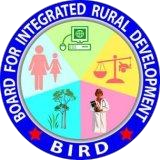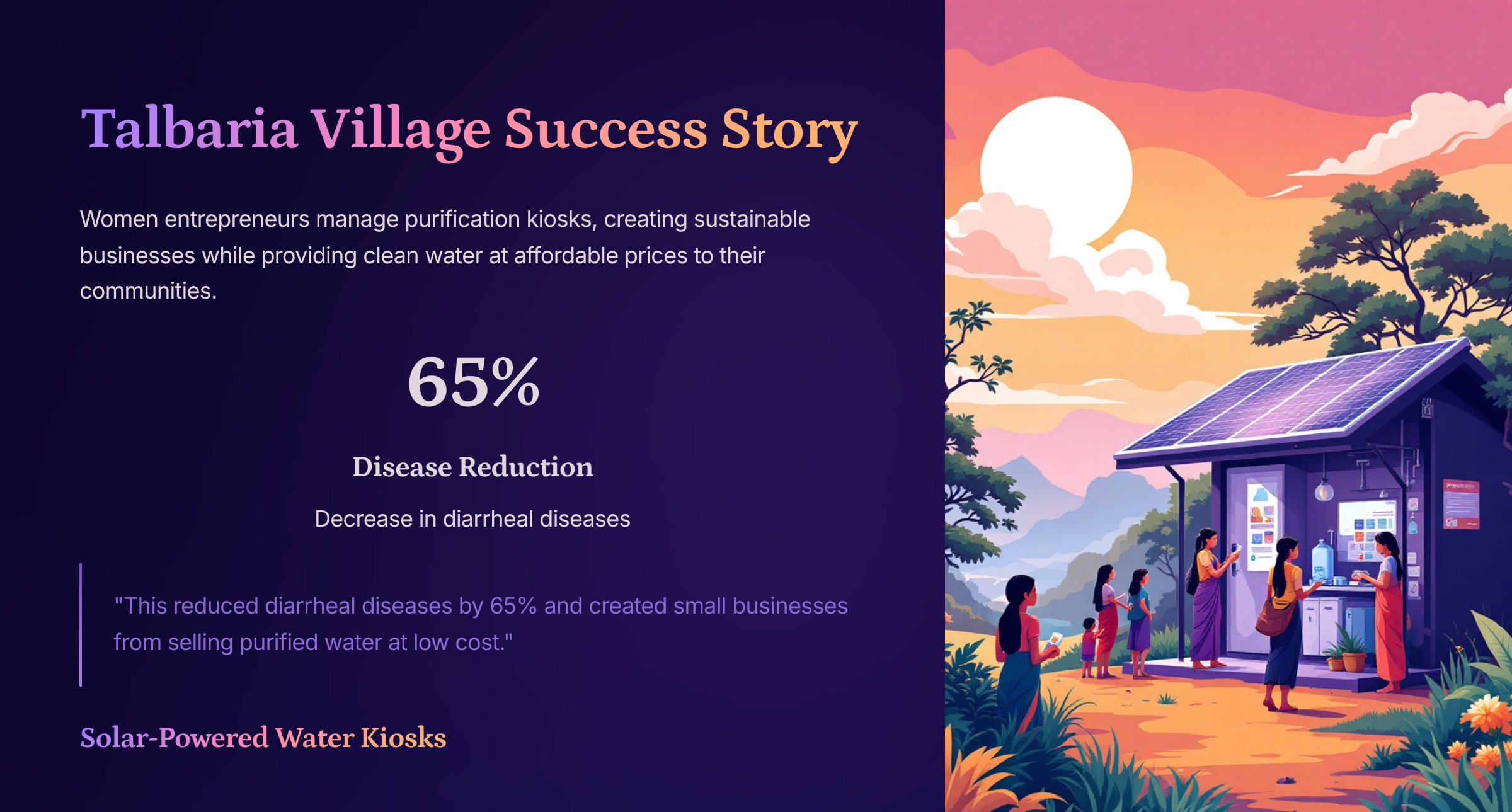
Narail Municipality — Integrated Waste Management
Overview
BIRD partners with Narail Municipality to pilot a modern, community-centred solid waste management system that stops open dumping, generates jobs, and turns waste into value (compost, recyclables, biogas). The model is designed to be replicable across small towns in Bangladesh.
Objectives
Eliminate open dumping and unsafe burning in target wards.
Establish door-to-door collection, segregation and recycling streams.
Create sustainable livelihoods for waste collectors and women’s recycling cooperatives.
Produce organic compost and energy products for local agriculture and municipal use.
Key Activities
Community mapping and baseline waste audit.
Awareness and behaviour-change campaigns (schools, markets, households).
Door-to-door collection pilot with segregated bins (organic / recyclable / residual).
Establishment of a transfer station with sorting line and small composting unit.
Training and formalization of waste collectors into cooperatives; provide PPE.
Market linkage for recyclables; production and sale of compost to farmers.
Development of a financial model with user fees + municipal subsidy + CSR.
Implementation Approach
Participatory planning with municipal authorities and ward representatives.
Phased rollout: 3 pilot wards → citywide scaling after 12 months.
Use of simple technologies (weighing, mobile payment collection, basic sensor monitoring).
Monitoring via dashboard: tonnage collected, diversion rate, incomes created.
Case study (Narail Bazaar pilot)
In the pilot ward around Narail Bazaar, BIRD supported formation of a women-led recycling cooperative that now collects and sorts recyclables daily. Compost produced at the community unit is sold to adjacent vegetable farmers, reducing their fertilizer costs and closing the organic waste loop.
Impact indicators
Tons of waste diverted from landfill per month.
Number of waste collectors formalized and average monthly income increase.
Kg of compost sold and farmers reached.
Reduction in open burning/illegal dumping incidents.
Farmers’ Value Chain & IT for Product Marketing
Overview
BIRD strengthens smallholder farmers by improving post-harvest practices, aggregating produce, and using digital tools to access markets. Our integrated value-chain approach increases farmgate prices, reduces losses, and links producers to buyers through an IT platform.
Objectives
Reduce post-harvest loss through improved handling and cold-chain nodes.
Increase producer incomes via aggregation, better bargaining and direct market links.
Empower farmer organizations to manage quality, packaging and brand identity.
Key Activities
Formation and training of farmer producer groups (quality control, grading).
Establishment of village aggregation centres and small cold stores.
Digital marketplace & mobile app for listing produce, price discovery, and order fulfilment.
Training on value-added processing (drying, packaging) and certification (organic traceability).
Linkages with buyers, retailers and e-commerce partners; logistics support.
Implementation Approach
Start with pilot value chains (e.g., vegetables, mango, fish) and scale based on market demand.
Provide hands-on training blended with digital extension services (SMS/IVR, app).
Business development services for packaging, branding and export readiness.
Case study (Mango Cooperative)
A village cooperative used BIRD’s aggregation and marketing app to negotiate directly with a city wholesaler, eliminating middlemen and improving farmgate price. With basic packaging training, the same cooperative could supply premium markets.
Impact indicators
% reduction in post-harvest loss.
Average increase in farmgate prices for participating farmers.
Volume of produce traded via the platform.
Number of farmer groups formalized and trained.
Agent Banking with Bank Asia (Mati Partnership)
Overview
BIRD operates as a certified agent for Bank Asia in remote locations, delivering essential financial services — accounts, cash-in/cash-out, remittances and payments — to the unbanked rural population through the Mati Community Bank model.
Objectives
Expand financial inclusion in underserved unions and wards.
Provide affordable, accessible banking services close to communities.
Promote safe savings habits and digital transactions among women and youth.
Key Activities
Setting up and equipping agent outlets with POS and trained agents.
Financial literacy sessions tailored to women’s savings groups and youth.
Supporting remittance and pension payouts through agent network.
KYC onboarding drives and mobile account opening.
Implementation Approach
Close collaboration with Bank Asia for technical integration, compliance and agent training.
Use of low-cost agent kiosks located at community centres, markets, and Mati branches.
Monitoring for customer experience and financial inclusion metrics.
Case study (Village Agent Hub)
An agent outlet in a remote union now provides pension payouts and small business loans, reducing travel time for elderly beneficiaries and enabling local entrepreneurs to receive payments digitally.
Impact indicators
Number of new bank accounts opened.
Volume of transactions processed through agents.
Number of financial literacy sessions and participants.
Increase in digital payments in target areas.
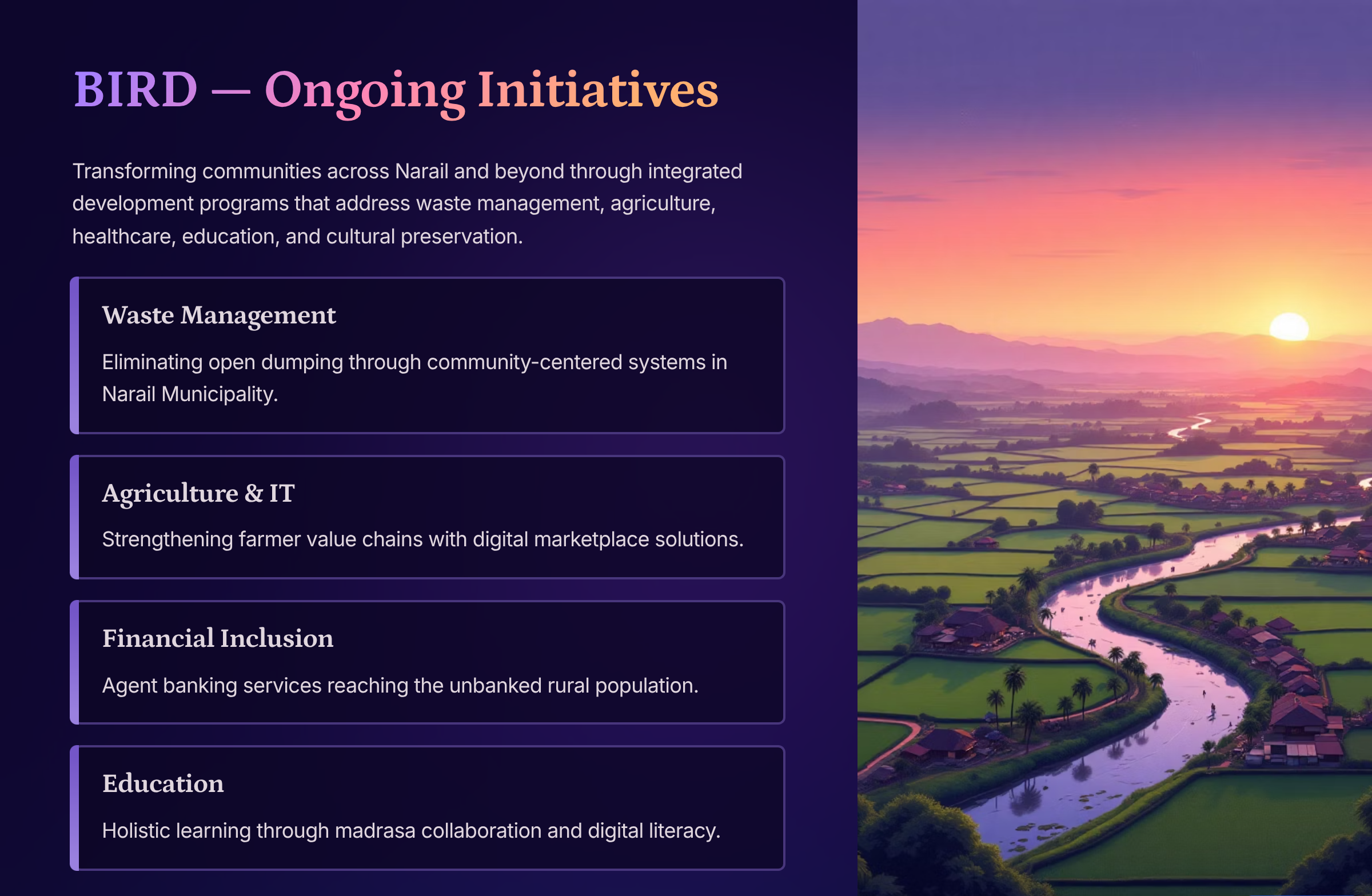
Madrasa Collaboration — Talbaria Bagdanga Siddikia Hosneyara Dakhil Madrasas
Overview
BIRD collaborates with local madrasas (Talbaria, Bagdanga, Siddikia, Hosneyara Dakhil) to integrate holistic education: religious and secular studies, health awareness, digital literacy and life skills. This partnership preserves cultural identity while preparing students for modern opportunities.
Objectives
Improve quality of education with blended curriculum (religious + modern subjects).
Provide health, sanitation and protective services to students.
Build digital literacy and life skills that widen future options.
Key Activities
Curriculum enrichment: English, mathematics, science, computer basics.
Teacher training in child-centered pedagogy and safeguarding.
School health programs: immunization drives, deworming, WASH improvements.
After-school clubs: sports, arts, leadership, and career guidance.
Scholarship and mentoring for vulnerable students.
Implementation Approach
Work closely with madrasa boards and communities to co-design interventions.
Recruit and train local youth as teaching assistants.
Establish digital learning corners (computers, internet, tablets).
Case study (Talbaria Digital Corner)
Talbaria Madrasa introduced an IT corner where girls learned basic computer skills and digital safety; several progressed to NEST training and freelancing opportunities.
Impact indicators
Enrollment and retention rates.
Number of teachers trained.
Student learning outcomes (reading/math assessments).
Number of students progressing to higher education or skills training.
Health-Related Community Awareness & Behaviour Change
Overview
BIRD runs continuous community health awareness programs focused on preventive health, NCD control, maternal & child health, hygiene, and mental wellbeing — combining local outreach, digital tools and community volunteers.
Objectives
Reduce prevalence of preventable diseases through awareness and early detection.
Improve community knowledge and practices on hygiene, nutrition and mental health.
Link communities to referral health services and telemedicine.
Key Activities
Community health sessions (village meetings, school programs, market stalls).
Training community health volunteers (CHVs) and school health clubs.
Campaigns on NCDs (diabetes, hypertension), smoking cessation, maternal nutrition.
Use of simple digital job aids: SMS reminders, short video clips, IVR messages in Bangla.
Health camps and screening events integrated with mobile clinics.
Implementation Approach
Behaviour change communication strategy using local influencers, religious leaders, and youth ambassadors.
Monitoring through anonymized screening data and community surveys.
Case study (Diabetes Screening Drive)
A series of village screening camps detected many undiagnosed pre-diabetes cases and linked high-risk individuals to tele-clinics for follow-up counseling and lifestyle support.
Impact indicators
Number of people reached by awareness sessions.
Number screened and referred for treatment.
Changes in key health behaviours (handwashing, tobacco use, antenatal visits).
Tree Plantation & Community Forestry
Overview
BIRD conducts large-scale tree plantation and community forestry initiatives to combat climate change, protect riverbanks, restore biodiversity and create livelihoods from sustainable agroforestry.
Objectives
Restore degraded lands and riverbanks with native species and mangroves.
Create sustainable income streams (fruit trees, fuelwood alternatives) for households.
Enhance biodiversity and carbon sequestration.
Key Activities
Participatory tree planting drives with schools, women’s groups and farmer cooperatives.
Nursery establishment for native and mangrove seedlings.
Agroforestry training: multi-purpose trees integrated with crops.
Post-plantation care (guardianship by local households) and monitoring.
Implementation Approach
Map priority zones with local government and community groups.
Link plantation with education and carbon-credit opportunities where feasible.
Track survival rates via community reporting and GPS monitoring.
Case study (Riverbank Restoration)
Community mangrove planting along erosion-prone riverbanks reduced soil loss and created new crab-collecting micro-enterprises for women.
Impact indicators
Number of trees planted and survival rate.
Hectares rehabilitated.
Additional household income from agroforestry products.
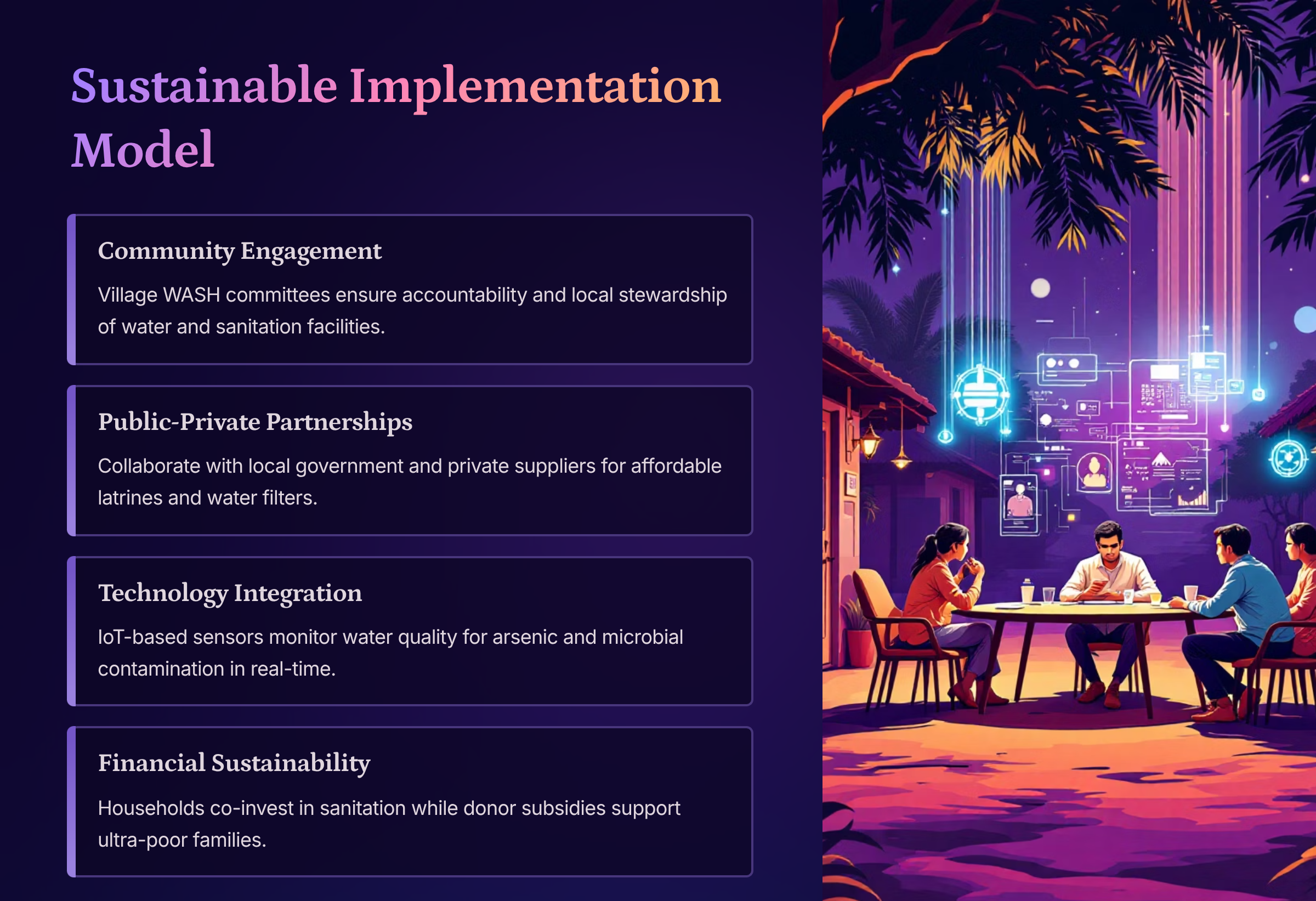
Organic Vegetable Cultivation (Kitchen Gardens & Market Crops)
Overview
Thru BIRD’s agriculture program, farmers and households learn organic cultivation, low-cost IPM (integrated pest management), kitchen gardens, and direct marketing of organic produce.
Objectives
Increase household nutrition and food security through kitchen gardens.
Promote marketable organic vegetable production with higher returns.
Reduce chemical pesticide use and build soil health.
Key Activities
Training on composting, bio-fertilizers, crop rotation and pest management.
Distribution of seed kits and demonstration plots.
Formation of collective marketing channels and branding for organic produce.
Link to the Mela enterprise wing for sales and e-market listing.
Implementation Approach
Farmer field schools and hands-on demos.
Certification pathways for interested cooperatives.
Use of farmer SMS alerts for agronomic advice.
Case study (Kitchen Garden Impact)
Household kitchen gardens provided dietary diversity, reducing child malnutrition risk and enabling small household income from local sales.
Impact indicators
Number of kitchen gardens created.
Increase in household vegetable consumption.
Volume of certified organic produce marketed.
Organic Fish Farming & Pond Restoration
Overview
BIRD implements climate-smart aquaculture: rehabilitating ponds, reintroducing native species, and promoting organic fish farming systems that increase protein security and incomes.
Objectives
Improve small pond productivity through polyculture and organic feeds.
Restore indigenous species and conserve aquatic biodiversity.
Create value chains linking ponds to markets and Mela outlets.
Key Activities
Pond excavation and restoration (where needed) and water quality management.
Training on feed alternatives, pond management and fish health.
Support for hatchery linkages and fingerling supply of native species.
Market linkage and value addition (smoking, organic labeling).
Implementation Approach
Integrated rice-fish and pond-based aquaculture for resilience to flooding/salinity.
Community pond management committees ensuring sustainable use.
Case study (Integrated Pond Project)
A cluster of smallholders adopted organic feeding and combined fish-vegetable systems, increasing household protein supply and net income.
Impact indicators
Increase in pond productivity (kg/ha).
Number of households adopting organic practices.
Market volume sold under cooperative arrangements.
Women’s Empowerment Training & SHG Development
Overview
BIRD runs comprehensive women’s programs: digital literacy, vocational skills, leadership, financial inclusion, and GBV prevention — all designed to move women from vulnerability to leadership.
Objectives
Increase women’s economic participation through skill and enterprise training.
Strengthen women’s groups and self-help groups (SHGs) for savings and mutual support.
Reduce gender-based violence through awareness, legal support and safe spaces.
Key Activities
Vocational training: tailoring, food processing, solar appliance installation, digital freelancing.
Financial literacy and access to Mati microfinance products.
Leadership and civic engagement workshops (village councils).
Safe-space creation and GBV survivor support services.
Implementation Approach
Women-led training centres and mobile training units.
Market linkage support through Mela and local buyers.
Monitoring on women’s income, decision-making roles and safety indicators.
Case study (Women’s Solar Collective)
A training cohort of women learned solar panel maintenance and formed a cooperative that installs and services household solar systems, earning steady income and local recognition.
Impact indicators
Number of women trained and certified.
Increase in average women’s incomes.
Number of women SHGs formed and active loans/savings.
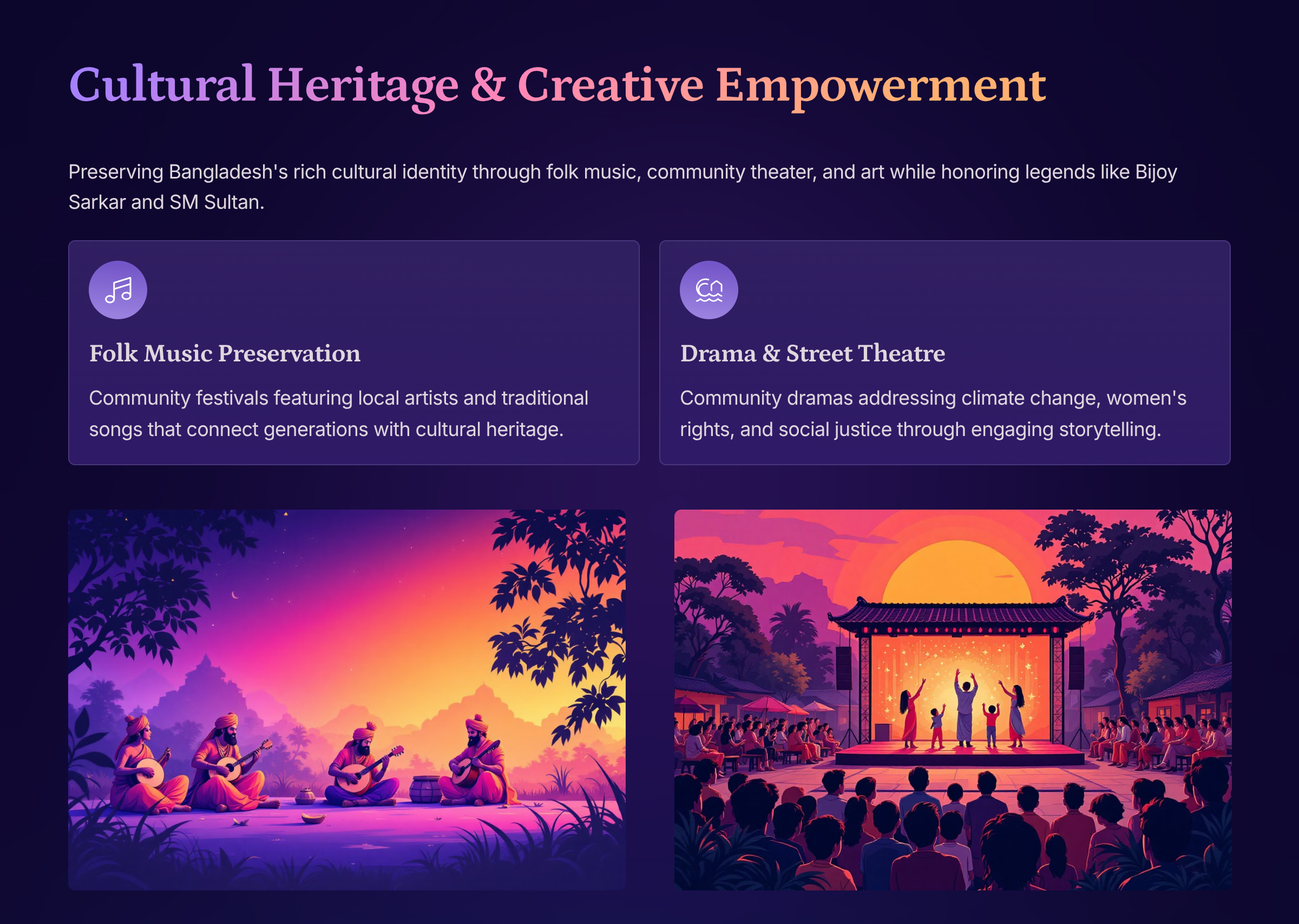
AI & Outsourcing (NEST — Training for Digital Jobs)
Overview
Through the NEST training centre, BIRD prepares rural youth and women for the digital economy: AI literacy, coding fundamentals, freelancing, BPO skills and remote work readiness.
Objectives
Equip youth with marketable digital skills for outsourcing marketplaces and local BPOs.
Build AI awareness and ethical understanding for community use cases.
Create job placement pathways and incubation for digital micro-enterprises.
Key Activities
Short courses: basic coding, data entry, digital marketing, UX basics and AI fundamentals.
Practical projects, hackathons and freelancing bootcamps.
Placement partnerships with outsourcing firms and remote job platforms.
Soft skills and English conversation modules.
Implementation Approach
Blended training: classroom + online mentors + project work.
Use of local NEST labs with computers and reliable internet.
Ongoing mentorship and co-working support for graduates.
Case study (Freelancer Cohort)
A batch of 30 youth completed NEST’s freelancing bootcamp and secured remote gigs averaging a sustainable supplemental income in the first 6 months.
Impact indicators
Number of trainees certified and placed.
Average monthly incomes of graduates.
Number of digital micro-enterprises incubated.
Small-Scale Smartphone-Based Telemedicine
Overview
BIRD deploys low-cost, smartphone-enabled telemedicine hubs and apps to bridge the access gap to qualified doctors. Community health volunteers facilitate consultations for those without smartphones.
Objectives
Provide timely medical advice and referrals to remote households.
Reduce travel and out-of-pocket costs for primary care.
Link community data into the health dashboard for trend detection.
Key Activities
Develop a light telemedicine app (video call, chat, triage forms) in Bangla.
Equip community telehealth kiosks with tablets/smartphones and local facilitators.
Weekly tele-clinic schedules with volunteer or partner doctors.
Integration with referral pathways to BIRD Hospital and partner facilities.
Implementation Approach
User-centred design focusing on low bandwidth and simple UI.
Training CHVs to use devices and collect baseline vitals.
Data governance and privacy protections; human oversight on all medical advice.
Case study (Remote Consultation Success)
A remote mother received urgent triage advice via BIRD telemedicine, was referred by the tele-doctor to the mobile clinic, and delivered timely care that prevented complications.
Impact indicators
Number of teleconsultations completed.
Referral conversion and patient satisfaction scores.
Reduced average travel cost/time to access care for remote patients.
AI-Based Disease Diagnosis (Assistive Tools & Triage)
Overview
BIRD pilots ethical, assistive AI tools that support early triage and risk detection (e.g., diabetic foot risk, cough sound analysis, symptom triage) — always as decision support for clinicians, not replacement.
Objectives
Improve early detection and referral of NCDs and respiratory or mental health risks.
Enhance clinician productivity in low-resource settings.
Build local datasets for contextually relevant AI models while preserving privacy.
Key Activities
Pilot small, explainable AI models validated with partner clinicians.
Deploy models in telehealth kiosks and mobile clinics for triage (with clear human-in-loop).
Train health staff on benefits, limitations and ethical use.
Build robust consent and data governance protocols.
Implementation Approach
Collaborate with academic partners and health tech startups for model validation.
Prioritize transparency, bias testing and regular auditing.
Ensure all outputs are accompanied by referral instructions and clinician oversight.
Case study (AI Triage in Pilot Clinics)
An AI cough-sound triage tool assisted CHVs to identify clients needing urgent review; clinicians confirmed improved early detection and faster referrals in the pilot.
Impact indicators
Sensitivity/specificity benchmarks from pilots.
Number of AI-assisted referrals and clinician acceptance.
Patient outcomes improvement metrics.
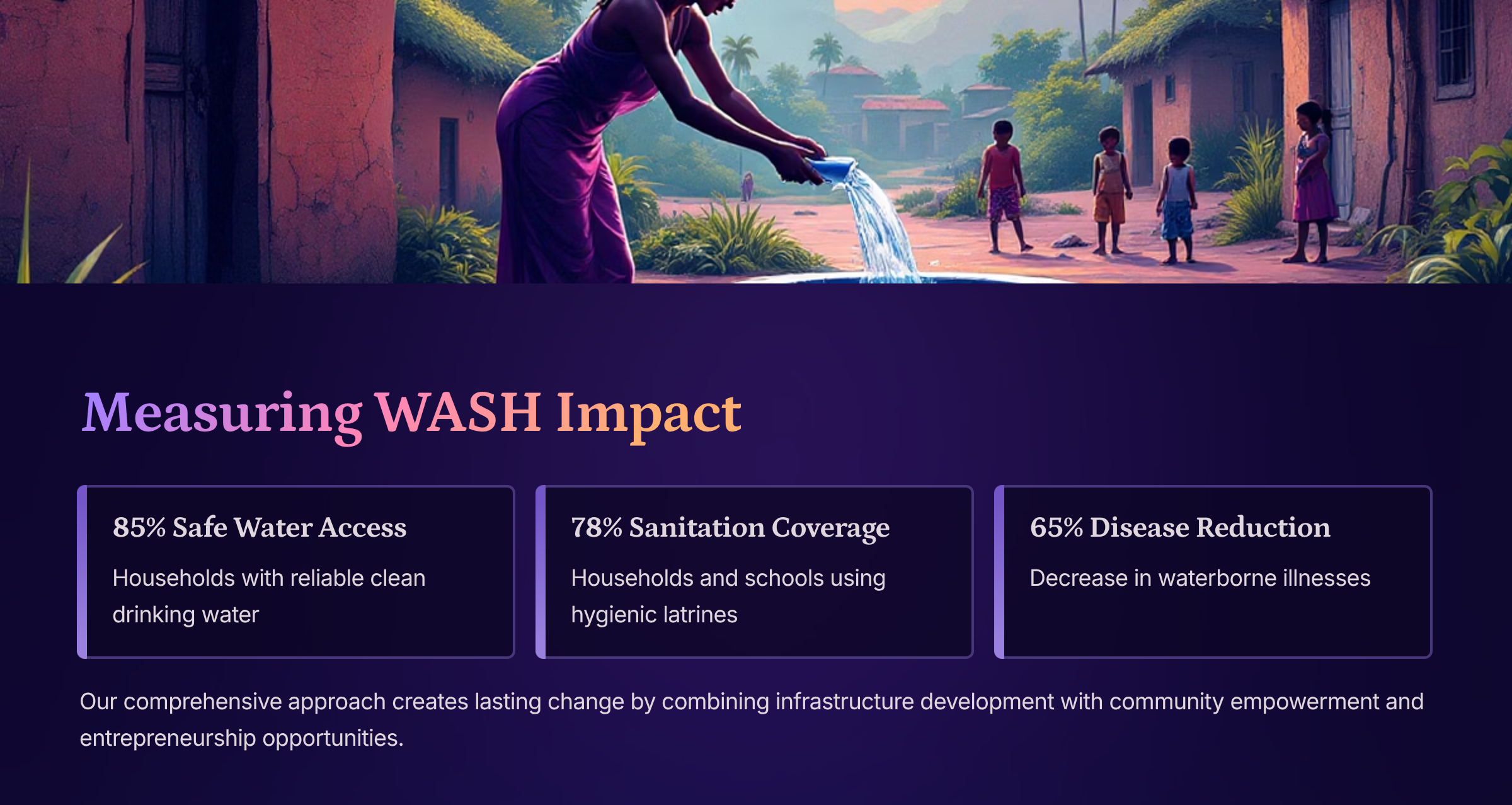
Food Facility for the Destitute (Community Kitchens & Food Security)
Overview
BIRD operates community kitchens and a food assistance program to ensure daily nutrition for the destitute, particularly during emergencies and seasonal hardships.
Objectives
Provide three nutritious meals daily to vulnerable groups (elderly, orphans, destitute households) in target areas.
Build community resilience and temporary safety nets during lean seasons and disasters.
Link surplus food from Mela enterprise and local markets to reduce waste.
Key Activities
Operate community kitchens with local hiring and volunteer rotation.
Vouchers and take-home rations for households in need.
Nutrition education and special meal programs for infants and pregnant women.
Emergency food distribution during floods/cyclones.
Implementation Approach
Partner with local caterers, farmer cooperatives and Mela suppliers to source food.
Monitor nutrition outcomes and beneficiary satisfaction.
Case study (Seasonal Kitchen in Narail)
During monsoon-related market disruptions, BIRD’s temporary kitchen served hot meals to hundreds of households and coordinated with local farms to support incomes.
Impact indicators
Meals served per month.
Number of households supported.
Measured improvements in short-term food security.
Cultural Heritage & Creative Empowerment
Overview
BIRD promotes Bangladesh’s rich cultural identity through folk music, community theater, art, and creative competitions. These cultural platforms preserve heritage, strengthen social unity, and inspire rural youth. By honoring legends such as Bijoy Sarkar (folk song, bijoy song) and SM Sultan (art), BIRD nurtures pride, creativity, and intergenerational learning.
Objectives
Preserve and promote traditional folk songs, plays, and community art.
Provide platforms for rural youth and women to showcase cultural talent.
Integrate cultural activities with awareness (health, environment, social justice).
Strengthen social cohesion through inclusive community participation.
Key Activities
Folk Song Festivals → Community events featuring local artists and Bijoy Sarkar’s songs that connect people with cultural heritage.
Drama & Street Theatre → Community dramas on themes like climate change, women’s rights, migration safety, and corruption awareness.
Bijoy Song Programs → Annual events celebrating Bijoy Sarkar’s contributions, mixing music with social awareness campaigns.
Art Competitions → School and community contests inspired by the legacy of SM Sultan, promoting creativity and rural artistry.
Mobile Cultural Units → Traveling teams bringing music, plays, and art workshops to remote villages.
Implementation Approach
Partner with cultural icons, schools, and local artists to co-create events.
Use open-air platforms in rural areas for maximum participation.
Connect cultural activities with national and international days (Independence Day, Victory Day, World Environment Day, Women’s Day).
Use digital recording and YouTube/Facebook streaming to preserve and share performances with global audiences.
Case Study (Narail District)
In collaboration with SM Sultan Foundation, BIRD organized an Art & Culture Week where 500 rural children participated in painting inspired by rural life and social change. Simultaneously, folk singers performed Bijoy Sarkar’s songs on migration and dignity. The event drew over 2,000 villagers, raising awareness of climate and health issues alongside cultural celebration.
Impact Indicators
Number of cultural events and participants per year.
Number of schools engaged in competitions and performances.
Increased awareness on social issues through cultural platforms.
Preservation of local heritage via recorded/archived performances.
Observance & Advocacy (National & International Days)
Overview
BIRD conducts high-impact observances of national and international days to raise awareness, mobilize communities and advocate policy change (e.g., World Water Day, International Women’s Day, International Day of Persons with Disabilities, World Mental Health Day, World Environment Day).
Objectives
Create public awareness and behavioural change around priority themes.
Use observances to launch campaigns, policy dialogues, and fundraising.
Strengthen partnerships and media visibility for program outcomes.
Key Activities
Community events, school programs, awareness walks and media campaigns.
Policy roundtables with local government and stakeholder consultations.
Public exhibitions showcasing beneficiary stories and innovations.
Implementation Approach
Plan annual calendar with clear objectives and measurable outcomes.
Use social media, local radio and community theatre to reach broad audiences.
Case study (World Environment Day)
A combined tree planting & plastic ban pledge event engaged 500 villagers, resulted in local market bans on single-use plastic and commitments for continued river-cleanup actions.
Impact indicators
Reach and engagement metrics (attendees, media impressions).
Policy or practice changes resulting from events.
Number of campaigns converted into sustained programmes.
🛠️ BIRD Strategy (2025–2050)
Climate-Resilient Rural Livelihoods
Salt-Resistant Agro-Lab
Floating Eco-Farm Villages
Rural Solar Irrigation Network
Green Housing for Climate Victims
Community Climate Insurance Scheme
Mangrove-Based Livelihood Cluster
Agro-Biochar for Carbon Credit Market
Smart Weather Mobile Advisory for Farmers
Micro-Renewable Energy Grids in Villages
Eco-Migration Rehabilitation Program
Coastal Aquaculture Climate Hub
Rainwater Harvesting Villages
Agro-Forestry for Food + Carbon Capture
Women-Led Climate Cooperatives
Green School Program (solar schools)
Climate Disaster Preparedness Clubs
Village Electric Vehicle (EV) Charging Hubs
Climate-Health Link Research Project
Youth Climate Innovation Labs
Rural Eco-Tourism Enterprises
Donor Fit: GCF, DFID, USAID, World Bank, EU Green Deal.
Community Mental Health & Inclusive Health
Tele-Mental Health Hub
School-Based Counseling Clubs
Digital Stress Management App (Bangla AI)
Suicide Prevention Youth Watch
Elderly Mental Wellness Program
Women Trauma & GBV Counseling Center
Climate Anxiety Therapy Units
Mobile Rehab Bus for Rural Mental Health
Addiction Recovery Program in Villages
Emotional Intelligence Labs for Youth
Diabetes Care & Lifestyle Clinic
Obesity & Nutrition Education Hub
Rural Liver Cirrhosis Screening Project
PWD Mental & Physical Rehab Center
Village Health Volunteer Network
Community Fitness Clubs (yoga, sports)
Mobile Diagnostic Services for Villages
Digital Health Literacy App for Villagers
AI-Supported Primary Care Diagnostic Tool
Health Rights Advocacy for Rural Poor
Donor Fit: WHO, UNICEF, Wellcome Trust, Gates Foundation, UNFPA.
Women’s Empowerment & GBV Prevention
Rural Women ICT Literacy Hub
Women’s Cyber Safety App
GBV Watchdog Network in Villages
Women Entrepreneurship Fund
Legal Aid Digital Desk for Women
Women Climate Leaders Program
Safe Transport for Rural Women
Rural Women Artisan Export Platform
Maternal & Reproductive Rights Helpline
Village Women Health Promoter Program
Women in Renewable Energy Jobs
Women Farmer Cooperatives
Digital Literacy for Women Migrants
Safe House Network for GBV Survivors
Women Eco-Entrepreneurs Hub
Women & Girls Sports Empowerment
Leadership Training for Rural Women
Financial Literacy for Women SHG Groups
Gender-Responsive Village Budget Advocacy
Mobile App to Report GBV Instantly
Donor Fit: UN Women, Global Fund for Women, EU, UNFPA.
Safe Migration & Reintegration
Pre-Departure Smart App for Migrants
Migrant Family Remittance School
Women Migrant Protection Program
Returnee Migrant SME Startup Fund
Village Migration Info Center
Migrant Child Education Support Hub
Digital Complaint Platform for Migrants
Awareness Drama on Safe Migration
Migrant Worker Health Insurance Program
Migrant Rights Advocacy Network
Migrant Skills Training & Certification
Reintegration Counseling for Returnees
Rural Youth Employment Alternatives Hub
Village Labor Rights Clubs
Migrant-Friendly Banking Products
Hotline for Migrant Exploitation Cases
Rural Language Lab for Migrants
Safe Migration Radio & Podcast Series
Migrant Family Cooperative Business Model
International Diaspora Engagement Platform
Donor Fit: IOM, ILO, EU, Swiss Development Cooperation.
Digital Safety & Cyber Empowerment
Cyber Literacy Curriculum for Rural Schools
Safe Net Youth Clubs in Villages
Parents Digital Awareness Program
Anti-Fake News AI Bot in Bangla
Cyber Harassment Rapid Response Cell
Child Online Protection Helpline
Women & Girls Cyber Safety Hub
Youth Digital Citizenship Program
Rural E-Safety Champion Network
AI-Based Early Warning for Cyber Crime
Cyber Wellness & Mental Health Link
Rural E-Governance Literacy Program
Village Data Rights & Privacy Education
Cyber Security Hackathon for Rural Youth
Safe Internet Café Certification Program
Rural Business E-Commerce Safety Hub
Mobile Cyber Safety App in Bangla
Digital Ethics Debating Clubs
Online Human Rights & Cyber Freedom Project
Digital PWD Accessibility Program
Donor Fit: UNICEF, EU, Global Internet Freedom Fund, Mozilla Foundation.

